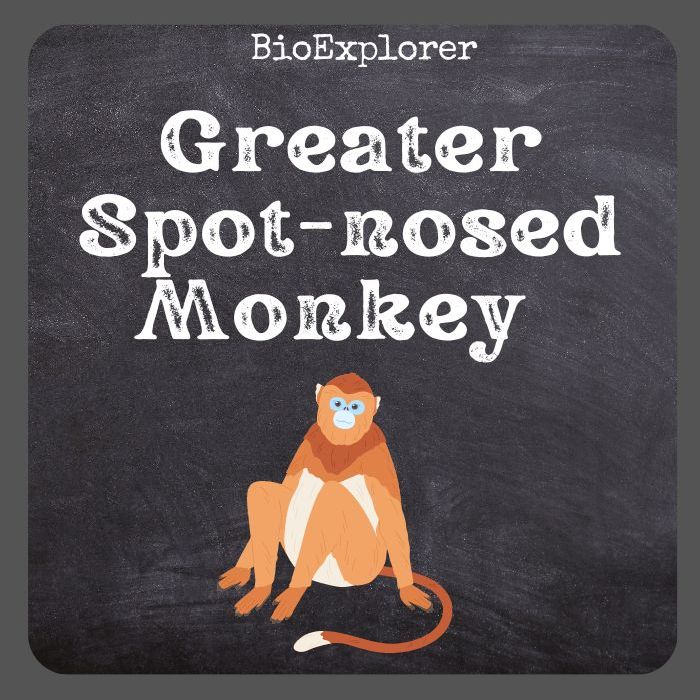
| Animalia | Primates | Cercopithecidae | Cercopithecus | Cercopithecus nictitans |

- Common Name: Greater spot-nosed Monkey
- Taxonomy Classification Year: 1766
- Monkey Size: 40 to 55 cm (15.75 to 21.65 in)
- Skin Color(s): Olive to black
- Habitat: Forest, rainforest
- Diet: Omnivorous
- Native Countries: Guinea, Democratic Republic of Congo
Greater spot-nosed Monkey Distribution
Greater Spot-Nosed Monkey Characteristics
The greater spot-nosed monkey[1] (Cercopithecus nictitans), also called the greater white-nosed monkey, putty-nosed monkey, and white-nosed guenons, is among the smallest Old-World Monkeys.
- Cercopithecus nictitans is most easily identified by a prominent white patch covering the nose. Their fur is dark, olive, or black, sometimes with a white patch on their chest.
- They have cheek pouches in which they store food while feeding.
- On average, individuals weigh between 4.2 and 6.6 kilograms, making them the largest of the genus Cercopithecus.
- Sexual dimorphism is evident, with males being more prominent in size and body mass than females.
- Great spot-nosed apes live mainly in trees but also move through the forest on all fours.
What Eats Greater spot-nosed Monkeys?
The African Journal of ecology publication indicates that leopards (Panthera pardus) predate Greater spot-nosed Monkeyss[§].
Greater Spot-Nosed Monkey Facts
- Great spot-nosed monkeys have a polygamous mating system in which a resident adult male coexists with multiple adult females and their young.
- They are generally social and found in groups of 12 to 30 animals. However, there is evidence of intra-group competition for dominant male status.
- They are primarily active in the mid-canopy, often demonstrating acrobatic movements such as leaps and darts.
- Their habitat overlaps with the Diana monkeys (Cercopithecus diana). The two species are thought to form mixed-species groups to protect themselves from predators and take advantage of opportunities to forage together.
- Males make loud, low-pitched calls to communicate territoriality and as a warning call to predators.
Suggested Reading: Monkey Species List
Cite This Page
APA7MLA8Chicago
BioExplorer.net. (2025, May 28). Greater Spot-Nosed Monkey. Bio Explorer. https://www.bioexplorer.net/animals/mammals/monkeys/greater-spot-nosed-monkey/.
BioExplorer.net. "Greater Spot-Nosed Monkey" Bio Explorer, 28 May 2025, https://www.bioexplorer.net/animals/mammals/monkeys/greater-spot-nosed-monkey/.
BioExplorer.net. "Greater Spot-Nosed Monkey" Bio Explorer, May 28 2025. https://www.bioexplorer.net/animals/mammals/monkeys/greater-spot-nosed-monkey/.











